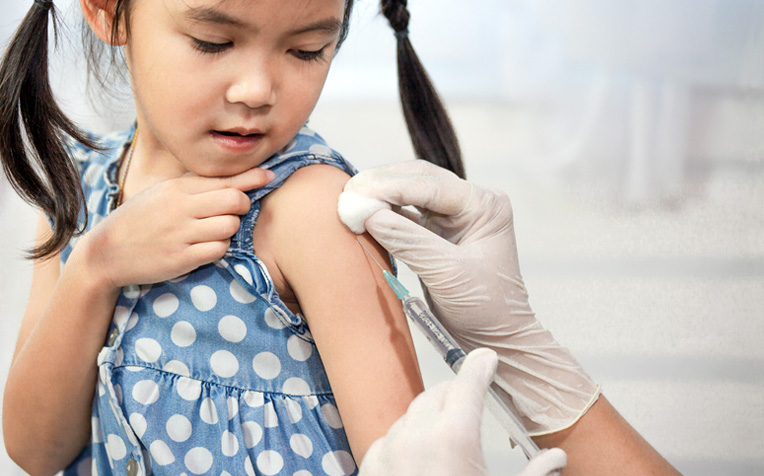
From time to time, the media runs stories of vaccinations gone wrong. Do not let that stop you from getting your child vaccinated.
Vaccines myths busted
For instance, in May 2011, Singapore’s New Paper reported on a boy who fell gravely ill after receiving the BCG vaccine meant to protect him against tuberculosis. One month after the vaccination, the boy living in Zhejiang, China developed acute bronchial pneumonia, sepsis, pulmonary infection, disseminated BCG disease and other life-threatening conditions. Such stories can understandably strike fear in the heart of parents.
In Singapore, babies receive at least 16 vaccines (given as 9 shots) in their first two years of life. That’s not counting the optional vaccination against Haemophilus influenzae, rotavirus and chickenpox infection. That can represent a lot of crying on the babies’ part, and potential worry on the parents’ minds.
Truth is, vaccination has saved and continues to save countless lives. HealthXchange sets out to dispel some of the top myths surrounding children’s vaccines.
Myth #1: Vaccines are unnecessary. The diseases they are meant for have virtually disappeared already.
While immunisation campaigns have indeed triumphed over diseases such as diphtheria and poliomyelitis, they could always make a come-back. They are still prevalent in countries like Nigeria where vaccination is boycotted due to political reasons.
Even a drop in vaccination rates could lead to a come-back. Take Japan. From 1974 to 1979, the vaccination rate for pertussis (whooping cough) dropped from 70% to about 30%. In five years, the country went from 393 cases and no deaths, to 13,000 cases and 41 deaths, according to the U.S. Centers for Disease Control (CDC).
“Vaccine-preventable diseases, though much less seen, still continue to lead to pneumonia, brain damage, heart problems, liver ailment, and blindness in children who are not immune. These diseases can still kill children, even in developed countries,” says Dr Yeo Cheo Lian, Senior Consultant at the Department of Neonatal and Developmental Medicine at Singapore General Hospital (SGH).
Myth #2: It’s best to let children build their own immunity.
Vaccines actually rely on the body’s natural lines of defence. After vaccination, the immune system makes antibodies to protect against future infections. As the germs in vaccines are either killed or weakened, they don’t generally cause severe sickness.
“The child develops immunity, the same as if he or she had been exposed to the natural disease. However, with vaccination, your child doesn't have to get sick first to get that protection,” says Dr Yeo. Contrary to some popular belief, the diseases targeted by vaccines are not benign. For instance, a natural mumps infection could lead to deafness.
Myth #3: Vaccines can cause life-threatening seizures.
Vaccination does carry a low risk of seizures, but, when they happen, these seizures only last a few seconds and do not cause long-term consequences, says Dr Yeo. The CDC report a rate of about 1 seizure for every 10,000 immunisations.
Seizures are typically the result of the fever that occurs following vaccination, particularly the MMR vaccine. The DTP vaccine increases the risk of seizures on the day of immunisation, while the MMR vaccine is associated with a higher risk 1-2 weeks after the shot.
Myth #4: Vaccines can cause autism.
The controversy between MMR vaccine and autism has been in existence since the late 1990s, recalls Dr Yeo. However, no link has been found between the vaccine and autism, following multiple large epidemiological studies and reviews of the evidence by the CDC, the American Academy of Pediatrics, the Institute of Medicine of the US National Academy of Sciences, and the UK National Health Service.
Autism usually appears in the first 18 months of life, a time period when many vaccines are given. The coincidental timing might explain why this myth seems difficult to uproot.
Ref: U11
Contributed by


















 Get it on Google Play
Get it on Google Play